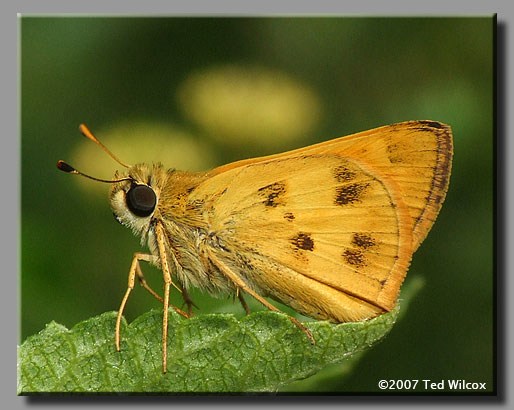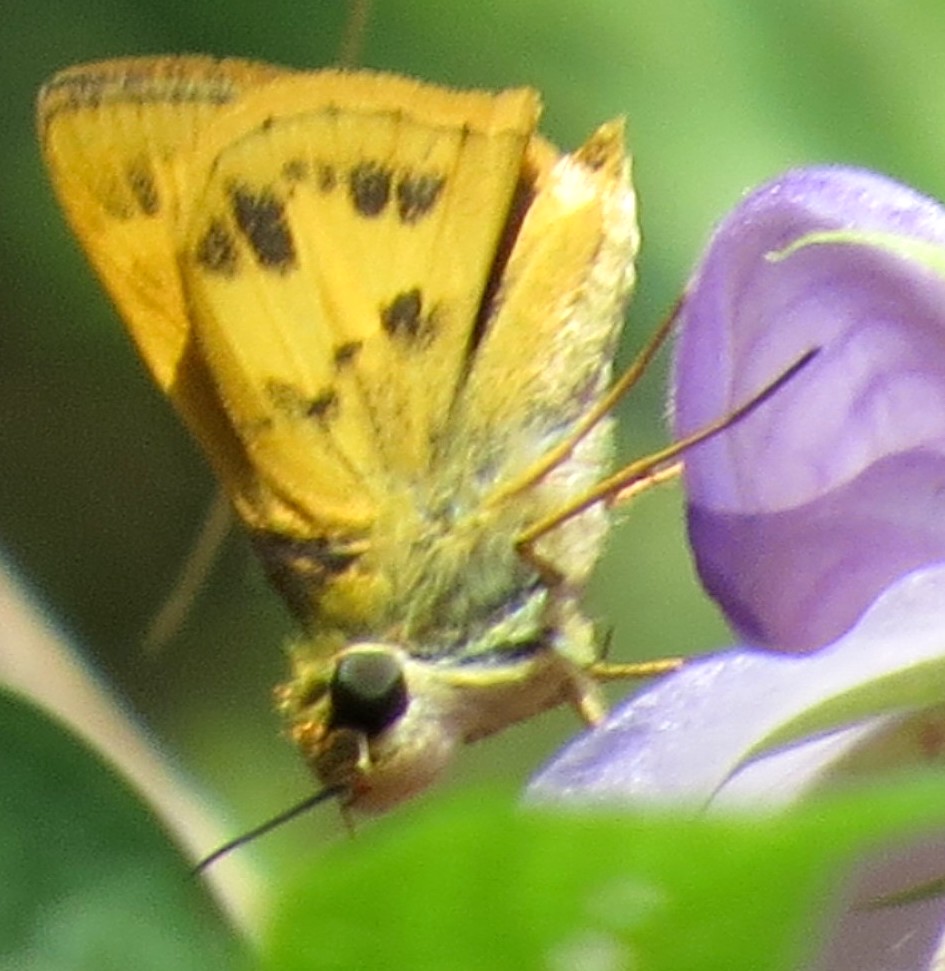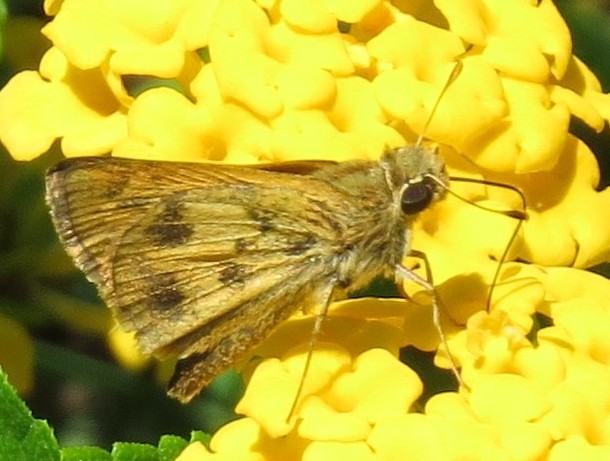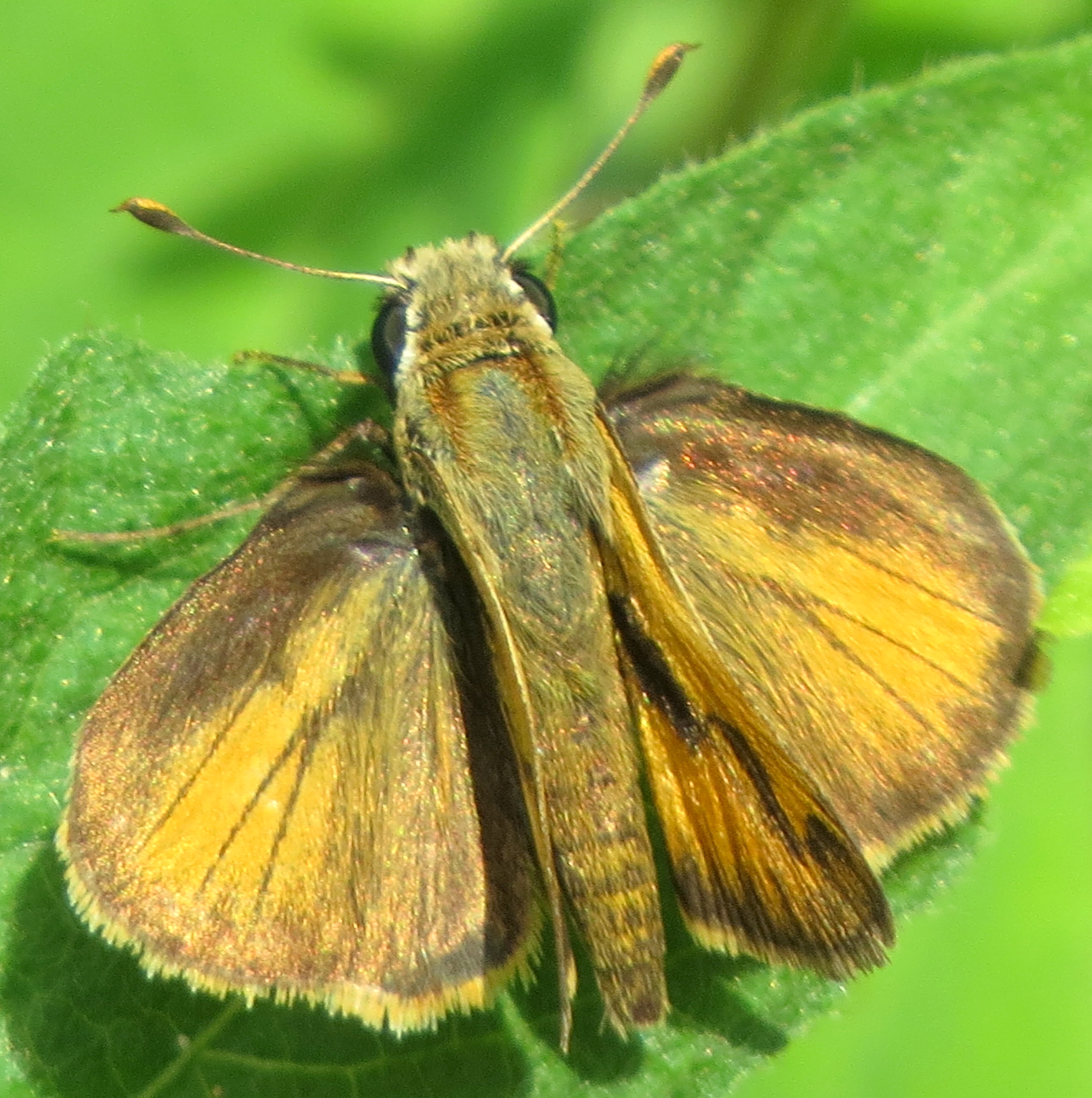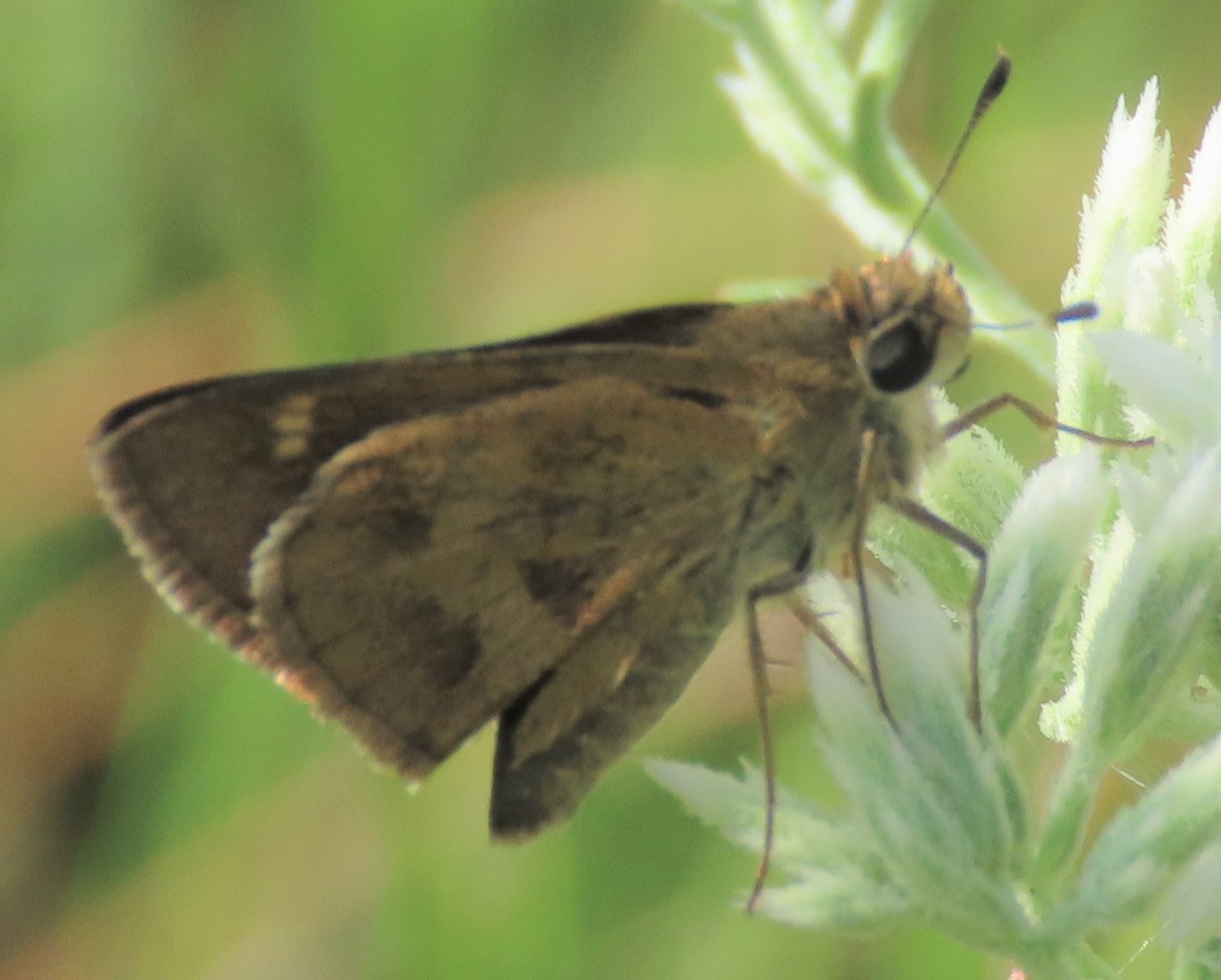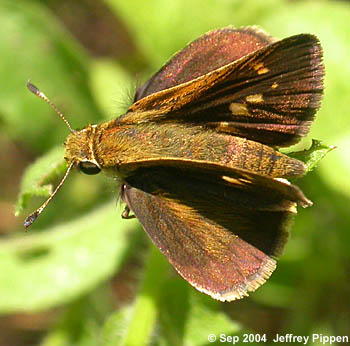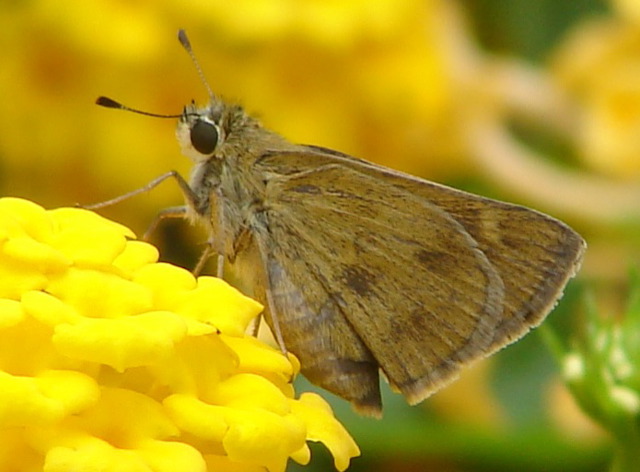|
| Common Name | Whirlabout by Roger Rittmaster => male, Carteret Co.
[View PDF]
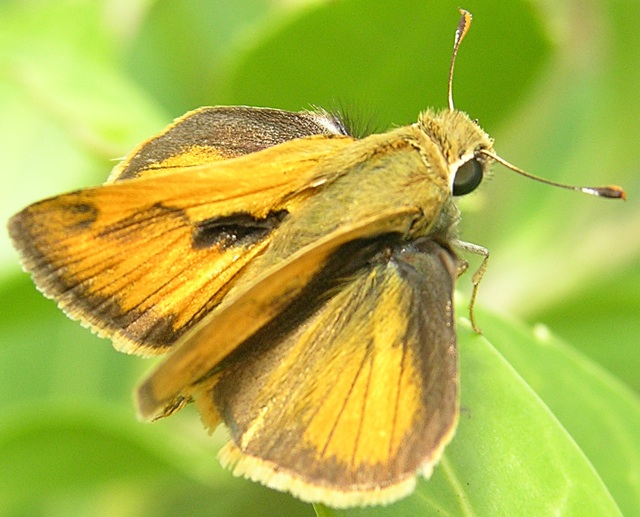 Click to enlarge Click to enlarge
[Google Images] GBIF [Global Distribution ] BoA [Images ] iNaturalist |
| Scientific Name | Polites vibex
|
| Link to BAMONA species account. |
| Map | Click on a county for list of all database records for the species in that county.
 |
| Distribution | DISTRIBUTION: Nearly throughout the Coastal Plain, and the extreme southeastern and southern Piedmont. Possibly absent from a few counties in the northern Coastal Plain, as the species is practically absent in VA except as a stray. The extent of resident populations in the Piedmont is uncertain, but it is certainly a resident in much of Mecklenburg County and eastward; however, it is mainly a stray or migrant in Chatham and Wake counties, in the eastern Piedmont, though a colony has been seen (once) in southern Wake County. It may stray to other counties farther west than shown on the county map, and there are some reports, but these have been removed from the map and database as of 2020 (see the final paragraph in COMMENTS below).
|
| Abundance | ABUNDANCE: Seemingly declining in the past few years. Formerly fairly common in counties near the SC border, from the Sandhills to the Wilmington area; in the past several years, mostly now uncommon to occasionally fairly common. Now uncommon in the central Coastal Plain, but very rare near the VA border. Rare in the Piedmont portion of the range, and likely a vagrant to the southern half of the Mountains and central Piedmont -- where documentation in the form of photos is necessary now for confirmation. The State Rank has been moved from S5 to now S4. Thankfully, despite declining numbers of most skipper species in the Coastal Plain in recent years, there was a highly gratifying 32 reports of Whirlabouts in the state in 2021 and 34 reports in 2023.
|
| Flight | FLIGHT PERIOD: Seemingly three broods between late April and early November. Dips in the flight charts around mid-June and mid-August seem to indicate the breaks between broods. The highest numbers occur from late July to early October.
|
| Habitat | HABITAT: Even more so than the Fiery Skipper, the Whirlabout favors hot, barren places. Sunny, sandy roadsides, barren fields, openings in pine/scrub oak sandhills, dunes, and other somewhat "sterile-looking" places are favored by this skipper. It does visit gardens, but it is greatly outnumbered there by the Fiery Skipper.
|
|
| | Plants | FOOD AND NECTAR PLANTS: Various grasses, including Bermuda Grass (Cynodon dactylon), are the foodplants. The species nectars on many flowers, especially those blooming within a few inches of the ground.
|
| Comments | COMMENTS: This is one of the characteristic species of hot, sandy barrens. It frequently perches on warm to hot sand, and usually flies close to the ground. It is usually outnumbered by the other common orange skipper of sandy places -- the Fiery Skipper. The latter species, however, will more often nectar on flowers several feet above ground, and the Fiery occurs over all of the state. Paul Hart has added many Piedmont records of the Whirlabout from Raven Rock State Park in Harnett County from 1998 to 2005.
I have made the uncomfortable decision, in 2020, to remove all of the reports of this species from west of Chatham and Mecklenburg counties, as there are no specimens or photos at all from any of those counties where previously reported -- Guilford and Gaston in the Piedmont; and Buncombe, Transylvania, and Macon in the Mountains. In fact, both Durham and Orange counties are extremely well-worked, and there are no known records for those two counties. Polk County, along the SC border in the western Piedmont, has also been well-worked, without any known records. Thus, reports west of those three counties should indeed be viewed with skepticism. Both male and female Whirlabouts are easily confused with other species, and I have witnessed on many occasions male Fiery Skippers being called as Whirlabouts, and some male Sachems as Whirlabouts also. Virginia does have a confirmed record for a Mountain county (Montgomery) of a stray, but it has a number of other county records that lack confirmation, based on Harry Pavulaan's Butterflies of Virginia Checklist; those reports might have to be removed from that checklist some day.
|
State Rank | S4 | | State Status | |
Global Rank | G5 | | Federal Status | |
| Synonym | Hedone vibex
|
| Other Name |
|
|
|

 >>
>>